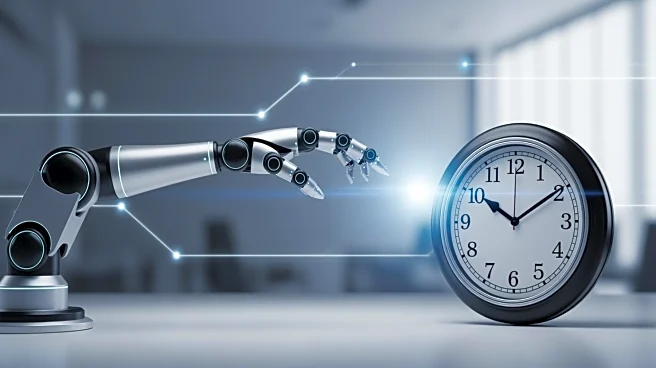What's Happening?
U.S.-based companies announced more than 153,000 job cuts in October, marking the highest total for the month in over 20 years, according to Challenger, Gray & Christmas. The report highlights the impact
of AI adoption and cost-cutting measures on employment, with technology, retail, and services sectors leading the layoffs. Year-to-date, employers have announced nearly 1.1 million job cuts, the most since the pandemic. The absence of federal data due to the government shutdown has increased reliance on private reports to assess the labor market's health.
Why It's Important?
The surge in layoffs signals a potential shift in the U.S. labor market, with implications for economic stability and employment trends. The adoption of AI and cost-cutting measures are reshaping industries, particularly in technology, retail, and services. This trend could lead to increased unemployment and economic uncertainty, affecting consumer spending and corporate investment. The absence of official government data due to the shutdown further complicates the assessment of the labor market's health, leaving investors and policymakers reliant on private reports. The layoffs could also impact public sentiment and political discourse, as stakeholders navigate the challenges posed by technological disruption and economic pressures.
What's Next?
As the U.S. government shutdown continues, the lack of official economic data may prompt increased scrutiny of private reports like those from Challenger, Gray & Christmas. Companies may continue to announce layoffs as they adjust to AI-driven changes and economic pressures. The Federal Reserve's recent interest rate cuts indicate a focus on mitigating potential risks to employment, suggesting further monetary policy adjustments could be forthcoming. Stakeholders, including businesses and policymakers, will likely monitor the situation closely, assessing the broader impact on the economy and labor market dynamics.
Beyond the Headlines
The integration of AI into various sectors is not only driving layoffs but also reshaping the workforce landscape. While AI offers efficiency gains, it poses ethical and social challenges, such as job displacement and the need for workforce retraining. The long-term implications of AI adoption could include shifts in employment patterns, with new roles emerging alongside the reduction of traditional jobs. Companies and policymakers may need to address these challenges through strategic planning and investment in education and training programs to support workers transitioning to new opportunities.












